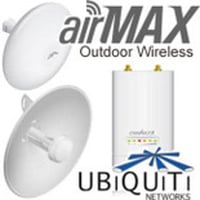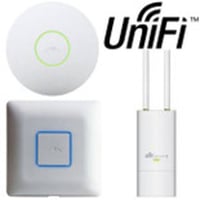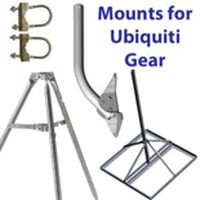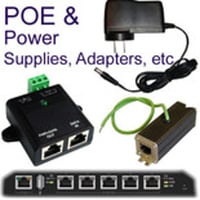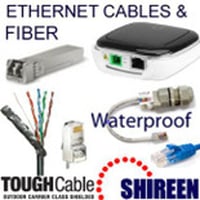POE Surge Protection
POE Surge Protection:
What is Power over Ethernet (PoE) surge protection?
Power over Ethernet surge protection includes the methods and devices that are used to protect PoE equipment from over damaging effects of electrical surges. Power over Ethernet differs from standard Ethernet networking equipment as it is power handling equipment. It, therefore, requires special protection from the effects of overvoltage. PoE surge protectors are specialist devices that are installed in series with PoE cabling ahead of the sensitive PoE-powered electronic equipment that requires protection. They allow normal power and data transfer over the line but will protect networked devices in the presence of a surge. They may also be called lightning arrestors, RJ45 surge protectors, surge arrestors, surge suppressors, or in-line data protectors.
Surge protection devices for PoE are designed to ensure that overvoltage is limited in amplitude, preventing damage to the insulation and dielectrics of devices, or that the surge is efficiently discharged to ground at distance from the PoE installation. In this way, the installation is protected from damage, and uptime is preserved.
Power over Ethernet
Power over Ethernet (PoE) is an Ethernet-based technology that is capable of simultaneously delivering electric power alongside standard data transfer via a single Ethernet cable. Several standards exist for PoE which outlines methods for relaying DC power via two or all four of the twisted pairs of Ethernet cable. Phantom power may be fed between signal wire pairs in the cable (Mode A) or applied via unused wire pairs, known as Mode B. IEEE 802.3 standards for PoE specify power transfer over Category 5 or higher cable. PoE systems consist of power sourcing equipment (PSE) that delivers the power via Cat 5 Ethernet cable to a powered device (PD). PoE varies in its power handling with an expanding number of distinct power classes including:
-
4 Watts (Power Class 1), 7 Watts (Power Class 2), 15.4 Watts (Power Class 3), up to a maximum of 25.5 Watts (PoE+ Power Class 4).
PoE has had widespread uptake and is now utilized in a range of environments that are both indoor and outdoor. Applications of PoE include the powering of:
- Wireless access points
- Modems
- Network Interface Controllers (NICs)
- Routers
- CCTV (IP cameras)
- Access control systems
- VoIP phones
- Point of Sale
- Intercom
- RFID readers
About surges
Surges are spontaneous, transient overvoltage events that occur in electrical systems and powered electronic devices. Also known as transients, surges vary greatly in their amplitude (millivolts to tens of thousands of volts) and duration, which is mainly in the order of microseconds or milliseconds. The amount of current that flows with an overvoltage event, for example, due to a lightning strike, can be large, prolonged, and very damaging.
Power over Ethernet and standard Ethernet devices vary in their capacity to withstand surge voltage events. This is often down to the dielectric or insulation strength of the component or device and a surge that exceeds its limits will certainly cause damage. High amplitude overvoltages are usually transient but will require a specific in-line surge protection device to shield sensitive equipment like CCTV, access points, and routers from the abrupt voltage increase.
Key causes of surges
The surges that affect PoE installation vary in their cause. The cause of a transient will often determine its amplitude and duration. Key causes include:
[A] Lightning
Lighting is recognizable as a significant and damaging cause of surge voltage that can extend over great distances and have direct and indirect effects. It is the cause of surge voltage that has the greatest destructive potential and outdoor PoE installations need to be protected against it. Despite its severity, lightning is thought to account for only 20 percent of surges.
The effects of lightning strikes are destructive with even indirect lightning strikes creating powerful surge voltages, electromagnetic pulses, and follow-on surge currents of tens of thousands of amps. This flow of energy leads to the destruction or total failure of an affected installation. If a surge protector is installed to protect a device that is struck, anything upstream of the protector is likely to be destroyed, and the surge protection device may be sacrificed.
[B] Switching Operations
Switching operations are a key cause of surges as they generate electromagnetic pulses, known as switching electromagnetic pulses (SEMP) that can induce a surge voltage.
A common switching event is the restoration or adjustment of power by utility companies, especially after outages. The short-lived high-flow current that follows a switching event can induce a transient overvoltage that can damage connected devices.
[C] Electrostatic Discharges
Electrostatic discharges (ESD) or static electricity occurs where there is a difference in potential between two charged objects or surfaces, allowing current to suddenly flow from the object with the greater charge to the surface or item with less charge. Electrostatic charge generation causes a sudden surge in voltage that can cause significant damage to sensitive electronic devices. ESD is a common cause of damage to Ethernet equipment and can be mitigated by the use of PoE surge protection. Ethernet cables can easily become charged through handling, induction, or tribocharging, ESD events involving Ethernet cables are known as Cable Discharge Events (CDE). The length of an Ethernet cable, its capacitance, and its elevation above the ground all affect the incidence and severity of ESD and CDE events in cable, with the built-up energy being dumped into equipment. ESD protection for PoE involves the provision of a defined low-impedance path to ground via a solid earth-ground connection.
Surge voltages can affect cables and circuits within devices via galvanic coupling, inductive coupling, or capacitive coupling.
-
Galvanic coupling takes place in circuits that share an electrical connection with a change in voltage in one circuit, causing a corresponding change in the connected circuit.
-
Capacitive coupling is due to the presence of an electrical field between two points in a circuit or device that differ in potential and create a voltage difference.
-
Inductive coupling occurs when a high current flow creates a magnetic field that is strong enough to induce a voltage in a nearby circuit or conductive material.
Key types of surge protectors for PoE
-
Passive surge protection devices for PoE are simple devices that provide in/out RJ45 ports for Ethernet cables and divert any incoming surge via a low-impedance circuit to ground. This is achieved practically by connecting the device to a grounding wire or surface (like a metal mounting pole that is earthed)
-
Gas Discharge Tubes (GDTs) are SPDs that are made up of electrodes that project into a glass or ceramic tube filled with an inert gas like Argon or Neon. An overvoltage that exceeds the GDT threshold will create change in the GDT to a low-resistance state, creating an arc across the gas and diverting surge current via an earthing wire. This is induced by the rate of rising of the surge voltage. GDTs have an extremely high surge current discharge capacity (exceeding ten thousand amperes), voltage protection levels starting at several hundred volts.
-
Transient Voltage Suppressor diodes (TVS diodes) these circuit components, also known as transils, protect the individual wires of twisted pairs from voltage spikes. In the presence of a surge or overvoltage, they become conductive and start to limit the surge. They are extremely sensitive with a high reaction speed and are effective up to their maximum limit voltage, which is usually lower than that of GDTs.
-
Silicon Avalanche Suppression Diodes (SASDs) are surge suppressors that have a silicone-based diode to provide a responsive protection response to breakdown voltages. They are frequently used to protect Ethernet data lines and low-voltage sensitive electronics.
RoHS compliant RJ45 surge protectors for Power over Ethernet.
Our range of market-leading Power over Ethernet surge protectors is manufactured to the highest standards using quality materials of good provenance. All of our PoE SPDs comply with the Restriction of Hazardous Substances Directive (RoHS) and equivalent domestic and international law which limits the use of hazardous materials in the manufacture of electrical and electronic equipment (EEE).
Our surge protectors also comply with Conflict Minerals legislation which prohibits the use of key metals including Tungsten, Tin, Tantalum, and Gold (3TG metals) from sources associated with the funding of conflict or forced labor.
Why is surge protection for PoE important?
Power over Ethernet systems utilize power equipment that is vulnerable to a range of electrical overstresses that can cause them to fail. Like other power systems, PoE specifications make provision for overvoltage but where the surge is extreme equipment becomes degraded or can be permanently damaged. Mitigating the effect of transients can be difficult as not all potential sources of surging are recognized, making surge protection essential. An additional issue is also where an Ethernet system has been upgraded to providing PoE by using a midspan/PoE injector, or PoE splitter (for powered devices) which may add vulnerability to surge damage to an existing network.
Surges are common and costly.
Device failure due to overvoltage is a frequent event with equipment malfunction and failure often being the only signs that an event has taken place, rather than overt and dramatic events such as fire. Insurance statistics suggest that as much as a fifth of all damage to insured items are due to surge events, with the economic impact in the US costing billions of dollars.
As wired and wireless networking and sensitive electronic devices perform ever more critical functions in industry, commerce, and households, the effects of overvoltage have had greater visibility and impact. Concern for global warming and altered weather patterns suggest that the incidence of extreme weather phenomena like lightning may increase in incidence. Network failure not only carries a financial cost but in the case of CCTV and alarm systems may be a major security risk.
Overvoltage events impact networks in four key ways.
Problems caused by surges and transient overvoltage are commonly referred to as the 4 Ds:
-
Disruption
A surge can disrupt the analog processing functions of devices meaning that they stop functioning correctly, lose data or frankly fail. There may not be any physical effect from the surge and a simple reset may return the device to normal functioning.
-
Degradation
Repeated surge events can degrade and wear components in electronic circuits meaning that their lifespan is shortened and they become more likely to fail. Passive SPD in Ethernet circuits diverts smaller surges that may have a cumulative stressing effect on hardware.
-
Damage
The heat associated with overvoltage events causes charring, destruction of insulation/dielectrics, carbonization of components, and even fire.
-
Downtime
The consequences of disruption, degradation, damage lead to downtime, which can have serious consequences for commercial systems and networks. Failure of equipment and associated data loss is costly with financial losses ongoing as long as the equipment is out of action. This is one of the key reasons for ensuring that Power over Ethernet systems are routinely installed with a surge protection device. SPDs provide vital safeguarding of industrial, business and telecommunication systems.
What is tribocharging?
Tribocharging is a process that builds up static electricity in cables by contact electrification. The cables become charged by touching or rubbing against a dissimilar surface. The repeated contact and movement between the surfaces build up the electric charge. The effects are unpredictable, but the triboelectric effect is a notable cause of electrostatic discharge in Ethernet cables. Many anti-ESD strategies used for manufacturing or packaging Ethernet equipment are aimed at avoiding the triboelectric effect and dissipating any charge present.
In Conclusion:
PoE is widely used to provide power to sensitive electronic devices that can become damaged or destroyed if a surge event occurs. The increased uptake of PoE has meant that networks are often set up in outdoor or exposed environments where there is a risk of a lightning strike or other forms of power fault are high. Increasing power levels also increase the vulnerability of devices to overvoltage or surge events. This makes proper circuit protection essential. PoE surge protection devices provide responsive, effective protection for a wide range of Power over Ethernet equipment, with convenient and compatible RJ45 ports that make them plug and play.
LEARN MORE:

